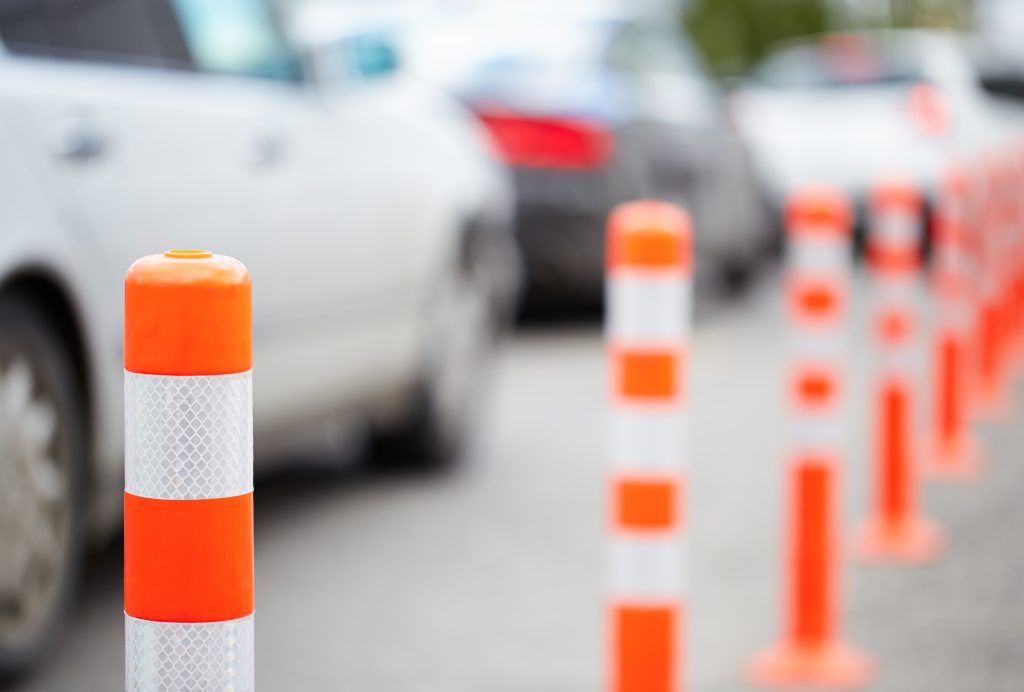“Invent the Future” is the motto of Virginia Tech where researchers are designing a prototype vest with woven-in radio sensors that will warn workers when they are in the way of danger from oncoming motorists or work zone equipment. The normal looking fluorescent vest will respond to digitally equipped warning systems in motorist’s cars and motorized work zone equipment.
For work zone employees as well as state troopers, police and first responders, the vest is a piece of the future that can’t arrive fast enough to protect them as well as motorists from work zone crashes.
But digital and other new technologies are already transforming work zone traffic control along America’s roadways in many ways. For example:
- Mobile technologies are part of the intelligent transportation systems (ITS) that have changed roadway work zones into “smart zones.”
- High tech fluorescent plastics are making work zones and road workers more visible to distracted motorists.
- And free educational programs via the Internet are making it easier to train road crews about work safety

Smart Work Zones
Similar to smart building and smart city technology, smart work zones are equipped with mobile, digital tools that connect to the Internet and to each other for real time communication. They collect and share data — such as the approach of a backhoe or a motorist’s car when your back is turned — almost instantaneously.
The Federal Highway Administration promotes smart work zones through its Every Day Counts (EDC) initiative. EDC reports that it encourages adoption of both new technologies and project coordination.
Explaining project coordination, the EDC report says it “involves smarter construction planning to reduce work zone impacts and generate time and cost savings. Cities and regions are combining multiple projects in a corridor, correlating right-of-way acquisition and utility work and coordinating construction work among agencies.”
According to EDC, these projects are experimenting with digital tools, such as queue management systems slowing down drivers by alerting them — via electronic signage — of work zone backups. It notes that implementing smart work zone strategies is important “because work zones trigger 24 percent of nonrecurring traffic delays, an injury every 14 minutes and a fatality every 15 hours.”
Intelligent Transportation Systems (ITS)
Today, there is lots of talk about the Internet of Things (IoT), which is a sort of cyber ecosystem of objects able to share information because they are connected to each other and to the Internet. IoT objects include home thermostats you can turn up or down by way of a smartphone and electronic signs on freeways that are constantly updated about road conditions.
However, long before the Internet and smart technologies, the federal government began its ITS program in the 1960s to improve transportation efficiency on public roads.
Nowadays, according to the American Traffic Safety Services Association, the wireless communication tools of ITS improve safety and road management through tasks such as:
- Collecting and verifying data about vehicle speeds
- Sending, storing and analyzing data as well as information for motorists and
- Videotaping work zones in real time to help make decisions about closing lanes and responding to problems.
So the terms “smart zone” and “ITS” aren’t synonymous but are closely linked.
Microprismatic Plastics
Aside from digital tools, smart zones contain well-placed barrels and other barricades in bright fluorescent whites and oranges.
Advance color technologies in the plastics industry are making these markers more visible than ever and at greater distances. Super bright microprismatic plastics — the white excels during the day and the orange provides superior glow at night — are retroreflective. That means they borrow light from another source, such as headlights, and shine brighter after returning light to the source. It is air cells between a double layer of plastic sheeting that make light bounce back to the source.
Talking about his state’s switch to microprismatic barrels, Michigan Department of Transportation work zone engineer Chris Brookes notes, “The result is drivers will spot the temporary work zone traffic control device sooner and will be able to begin reacting to tapers and traffic shifts earlier.”
Work Zone Training Online
One more element making work zones smart is FHWA worker training that government grants have made available online and often for free.
For example, the FHWA in conjunction with Indiana’s Wayne State University offers a free national training program called the “Temporary Traffic Control Plan Development Workshop.”
The program focuses on utility and urban work zones. It is designed for engineers, planners, field personnel, foremen, safety inspectors and anyone involved in work zone temporary traffic control.
Part of training should involve how to develop and read plans showing how to set up work zones. Invarion, a company that produces work-zone design software that is much easier and more rapid to use than CAD programs, also provides online tutorials for its RapidPlan product. With RapidPlan, you’re able utilize templates or even their Autoroad tool to avoid line by line drawing. The intuitive features of RapidPlan will allow anyone to accurately depict their worksite through vast sign libraries or import capabilities. Please contact Invarion for more information about the product and online training.
The future is here, and it demands new skills for creating safe, efficient, smart work zones. This observation leads us back to Virginia Tech’s worker vest project.
Andy Alden of the Virginia Tech Transportation Institute said that the university’s vest might appear in work zones within five years. “Roadside deaths are a major problem, and the advent of connected vehicle technology has opened up new opportunities for a technical solution that will save lives,” Alden says.
Let’s make that multiple technical solutions, and the sooner, the better.
